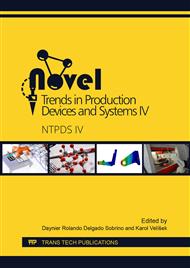p.230
p.236
p.246
p.257
p.266
p.275
p.282
p.292
p.299
FEM-Aided Material Selection and Derivation of Material Indices
Abstract:
This paper is devoted to the derivation of material indices using the finite element method. Material indices take into account material properties such a Young’s modulus and density are a powerful tool for material selection for various applications since they allow a quick comparison of suitability of different materials. Until now material indices were developed analytically for rather simple textbook-like examples. However, by implementing the finite element method and data fitting tools material indices can be developed for more complicated problems where the analytical solution cannot be obtained. The current paper describes derivation of material indices using ANSYS software. It is used as a simulator of a physical phenomenon. The simulation generates output data which is used to derive the material index.
Info:
Periodical:
Pages:
266-274
Citation:
Online since:
April 2018
Authors:
Price:
Сopyright:
© 2018 Trans Tech Publications Ltd. All Rights Reserved
Share:
Citation:


